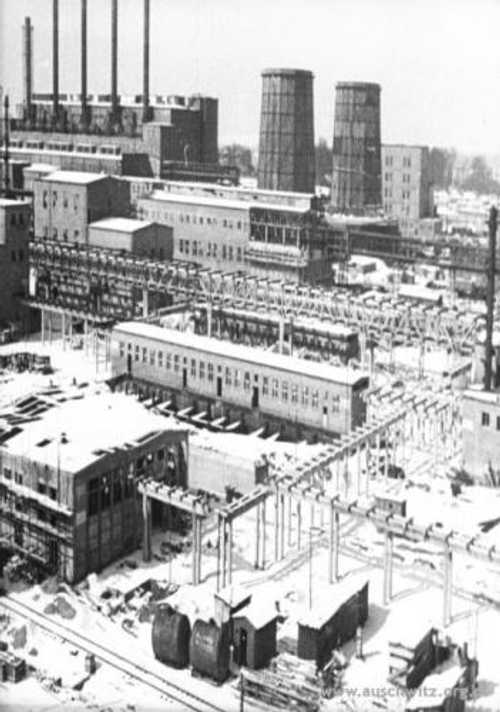
German Forces
I.G. Farben, Auschwitz.
The I.G. Farben chemical plant at Auschwitz in its prime. In "The Wages of Destruction", Adam Tooze points out that contrary to the impression that this (and other) factories were located at Auschwitz because the camp could provide slave labour, the reality was more like the other way around. The Auschwitz site was identified by I.G. Farben as a suitable location in a pattern of projected synthetic rubber plants. At the time, the Auschwitz camp was little more than a small detention/forced labour camp. Thus it was the site that attracted the factories (initially I.G. Farben), which in turn required the camp to be expanded to supply labour to build the factory (factories), which in turn attracted more factories, which in turn required the (monstrous) expansion of the camp to supply labour to the whole industrial complex. Of course, as things turned out, the location that attracted I.G. Farben from an industrial viewpoint also proved ideal as a centre for mass murder. The overall I.G. Farben programme for production of synthetic rubber was moderately successful - but not at Auschwitz. Other demands overtook the synthetic rubber proposal there. It took a huge effort but, by the latter part of 1943, the Auschwitz plant was producing methanol (needed for the manufacture of explosives and rocket fuel), probably ethanol (needed as a feedstock for the manufacture of high-octane synthetic gasoline and aviation fuel) and other strategically important chemicals. The "huge effort" was mainly made by slave labourers, Jewish and non-Jewish, who were compelled to live and (when they could no longer work) die in service of the project. Best regards, JR.
3758 Views
5/21/2012
